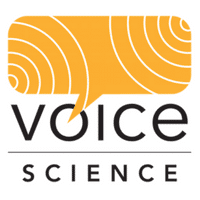How To Sound Natural With Your Stuttering Therapy Techniques
It is important to sound natural when you learn your stuttering therapy techniques. There is so much more to communication than fluency.

Can you use Stuttering Therapy Techniques and still sound natural?
Are you a person who stutters? Have you learnt your smooth speech techniques but something still doesn’t feel or sound, right? And because of this, you have stopped using your techniques?
Or maybe you are curious about Stuttering Therapy Techniques and how they can help your speaking.
Let’s go back to the beginning and take a look at what stuttering is, your treatment options, and how to assist with your speech naturalness.
Stuttering Therapy Techniques are Based on Research
Those who have a stutter know this all too well, but, often members of the public may be misinformed about what a stutter is and isn’t.
Sometimes your family, close friends and even strangers, may feel inspired to coach you on how to stop stuttering.
We figure they want to help you. They see you struggling. But the problem is, there are better ways to help your stuttering.
Stuttering Therapy Techniques are more effective than advice from strangers.
Prompts to “slow down” or to just “spit it out” or “calm down” are not based on research. They actually will not stop you stuttering. So if you are feeling frustrated by these comments, perhaps it’s time to advocate for yourself and get your stuttering therapy technique stack down pat.
Stuttering Therapy Techniques Pivot Around What The Researchers Know So Far About Stuttering 🗣️
Stuttering is defined as a speech disorder where the flow of speech or rhythm is interrupted (Ward, 2017). Many TV shows or movies depict a stutter as repeated sounds (t-t-tuesday) or repeated words (but-but-but) BUT, there are many other interruptions that occur in stuttering. These may include blocks, where a person looks and sounds like they are stuck, or prolongations where a sound is stretched out (Ward, 2017). We don’t know exactly what causes stuttering, but it is thought to potentially be a disorder of the speech timing and planning of speaking. Strong genetic links are also suspected.
In fact, while we are on this topic there is a very big study happening right now that you could personally assist with. If you are a person who stutters, check out Genetics of Stuttering Study to help progress research into the causes of stuttering.
Stuttering Therapy Techniques are Designed to Address Dysfluencies
All people show some degree of dysfluency in their speech. In fact, it is natural to not always speak precisely.
Last week, I saw a newsreader have a moment of disfluency on LIVE TV.
Then, today, I even stumbled and had to repeat words while speaking. And I’m a speech pathologist!
Stuttering therapy techniques have been developed to address the idiosyncratic stuttering behaviours that affect you.

Which is your pathway?
Stutter more fluently or Speak more fluently?
We want to stress that there is nothing wrong with having a stutter. While some people may be embarrassed by their stutter, others have learnt to accept their stutter in the moment.
Pathways to Managing Stuttering
Different approaches can be taken to assist your speech fluency IF you choose to. The two main treatment pathways include speak more fluently OR stutter more fluently. Both methods are evidenced-based and have shown positive outcomes. As always, not all approaches suit all people, and it is essential to communicate your goals so that the appropriate pathway can be taken.
Stutter More Fluently
Stutter more fluently aims to modify moments of stuttering so that it is not as effortful and targets negative thinking patterns concerning stuttering. One significant component of this approach is to reduce the fear of stuttering by removing any avoidant behaviours, because the more you stress, the more you stutter and vice versa (Van Riper, 1973 in Ward, 2017).
Speak More Fluently
Whereas, speak more fluently uses a range of Stuttering Therapy Techniques to speak with increased fluency. This is the approach we use at Voice Science.
💡 Fun fact: This approach is based on operant conditioning and the belief that fluency can be achieved by using motor control techniques (Ward, 2017). Speech restructuring, using smooth speech techniques, is an incredibly effective evidence-based method for reducing the frequency and severity of stuttering behaviours. However, some clients find that when they use their Stuttering Therapy Techniques, they do not sound NATURAL.
Research has indicated that following smooth speech intervention; clients may sound breathy, monotone, slightly slurred or have impacted speech rhythm (Ward, 2017). So what does this result in?… Relapse and a hesitancy to use the strategies in day to day life.
The Key to Smooth Speech 🔍
The key to smooth speech is to master your Stuttering Therapy Techniques in isolation and then implement them with naturalness goals (Ward, 2017). Your clinician will help you to track your naturalness as part of therapy. Goal setting will also help you to work towards sounding natural during everyday tasks.
What Are Your Speech Fluency Goals?
Take a moment to think about your goals. Perhaps you need to use a more exaggerated version of your stuttering therapy techniques techniques to control your stutter. While this may sound slightly unnatural, Cream, Onslow, Packman and Llewellyn (2003) found that some participants were happy to sound unnatural to ensure that they did not stutter. Whereas for others, sounding unnatural was not socially acceptable for them. Essentially, smooth speech techniques are your toolbox and provide you with the knowledge to control the way you sound.
Insuring Against Relapse
As relapse is common, we have some frequent problem areas and essential tips to assist with your speech (and communication) naturalness. This is such an important topic to acknowledge if you’re thinking about getting some techniques to help with stuttering.
The chance of relapse is high, because it is easy to lose motivation, struggle to really master naturalness in spite of the techniques and heck, life! Things can really get in the way of daily practise. This is why we strongly recommend staying connected with a speech pathology clinic even once you have done your set of sessions. Refresher visits and follow up appointments spaced in realistic intervals (monthly, bi-monthly, every 3 months) after a solid amount of treatment can secure your fluency further.
6 Factors that may be Affecting your Naturalness
#1 Intonation
🔨 THE FIX
#2 Word Stress
🔨 THE FIX
#3 Voice Quality
🔨 THE FIX
Stuttering Therapy Techniques do not have to mean a change in voice quality. Keep your voice natural. This is one thing we won’t let you get away with at Voice Science, especially since all of our speech pathologists work extensively in voice therapy for adults as well. If this is an area of difficulty for you, our team can help you nail your voice naturalness while using your techniques.
💡 Sneaky Voice Tip: If you want to sound more authoritative, work towards a resonant voice quality and reduce your vocal fry.
#4 Intended Vocabulary
🔨 THE FIX
If you are using your Stuttering Therapy Techniques, there will be no need to avoid specific sounds or words. If you have used this compensatory technique for a long time, it may take some practice to get back into the flow of using your intended words.
If you know that vocabulary is a seperate weakness- check out this Resource to Boost Your Vocabulary Or, book an Elocution & Communication Session
#5 Eye Contact
🔨 THE FIX
Directed eye gaze is the key! Direct eye contact may be difficult when you are stuttering or about to stutter but maintaining eye contact lets your communication partner know that you are interested in the interaction and that you are in control of the conversation. You might feel embarrassed because of stuttering, but if you maintain eye contact, you will come across as confident (Blomgren, 2013; Winner & Crooke, 2016).
#6 Practice
🔨 THE FIX
Remember the old adage… Practice Makes Perfect! The only way to be natural is to practice your fluency techniques with naturalness goals. Get creative with your practice. Reading, monologue and conversation-based tasks are great and necessary to establish a sound technique, but also consider attending a Speak Easy Association meeting to practice your strategies in a supportive environment (Cream et al., 2003). At times you may notice that you are on autopilot when you practice, so check-in with yourself and continue to develop new, exciting and challenging goals. Not only will this keep you motivated to minatin practice long term, but it will give you a sense of accomplishment. Read more speech pathology practise tips for Adults here.
Communication Is Not Just About Fluency!
- Voice Therapy
- Social Communication Strategies
- Elocution Strategies
- Pronunciation Training
What next?
There is no cure for adult stuttering, and relapse is common across both approaches for stuttering. However, smooth speech techniques can provide you with the tools to access stutter-free speech. But remember, you are only human. You may be the most proficient user of your smooth speech strategies, but there will be moments when you stutter, and this is normal and OK. Find your balance. Some people may prefer to sacrifice a little naturalness to remain 100% stutter-free, while others will work towards a happy medium. It is crucial that you know your goal and what you would like to achieve.
After reading this blog, maybe you feel a refresher session is in need, or are worried that you do not sound natural. Hopefully, this has inspired you to consider smooth speech, so reach out if you have any questions.
Book an assessment appointment today if you are new to Voice Science and we will provide you with the best evidence pathway.
Book a refresher session here if you are already one of our clients.
References
-
Blomgren, M. (2013). Behavioral treatments for children and adults who stutter: A review. Psychology research and behavior management, 6, 9.
-
Cream, A., Onslow, M., Packman, A., & Llewellyn, G. (2003). Protection from harm: the experience of adults after therapy with prolonged‐speech. International Journal of Language & Communication Disorders, 38(4), 379-395.
-
Erickson, S., Block, S., Menzies, R., O’Brian, S., Packman, A., & Onslow, M. (2016). Standalone Internet speech restructuring treatment for adults who stutter: A phase I study. International journal of speech-language pathology, 18(4), 329-340.
-
O’Brian, S., Carey, B., Lowe, R., Onslow, M., Packman, A., & Cream, A. (2018). The Camperdown program for stuttering: Treatment manual. Australian stuttering research centre.
-
Ward, D. (2017). Stuttering and cluttering: frameworks for understanding and treatment. New York, NY: Routledge.
-
Winner, M. G., & Crooke, P. (2016). Good intentions are not good enough. Santa Clara, CA: Think Social Publishing Inc.


